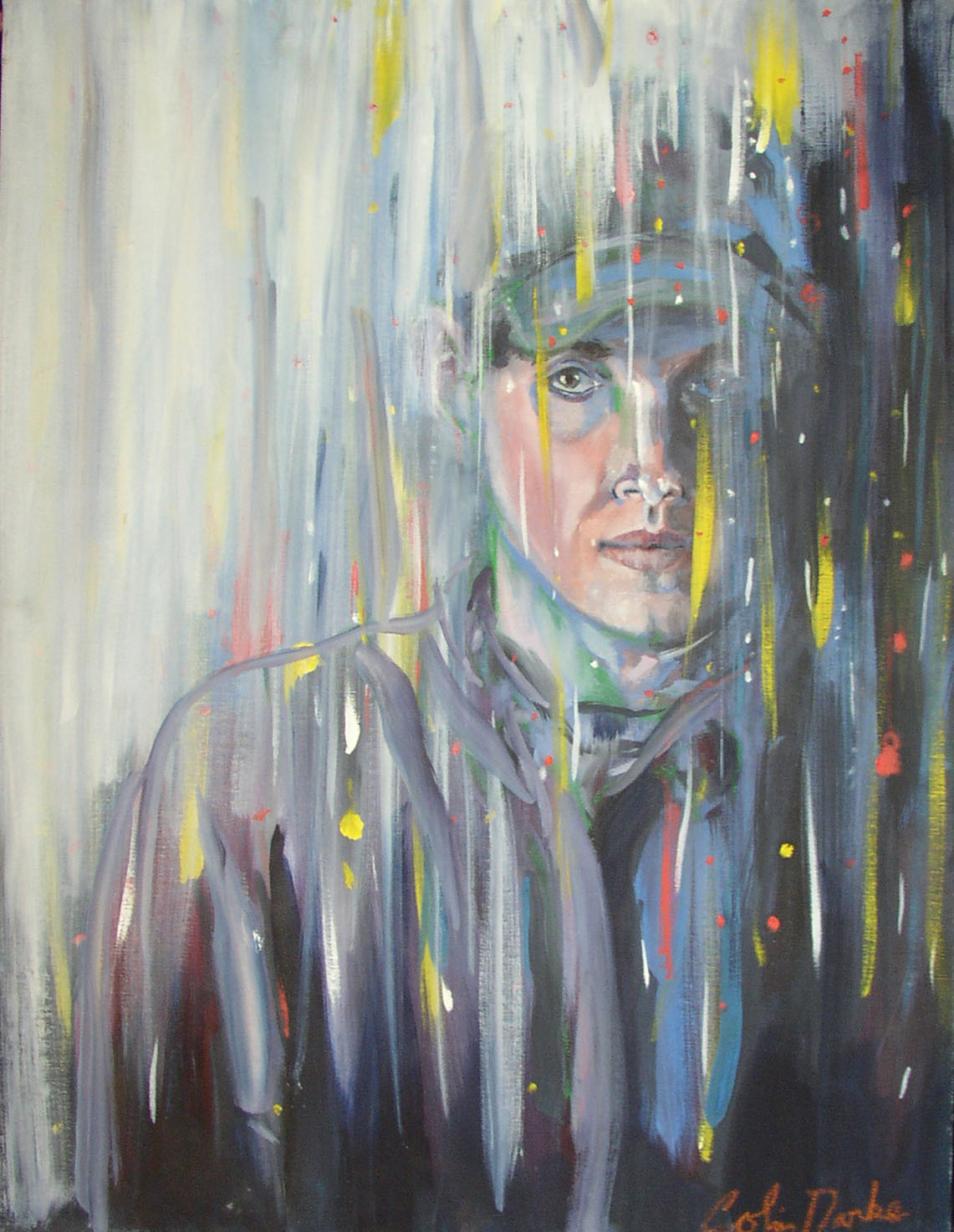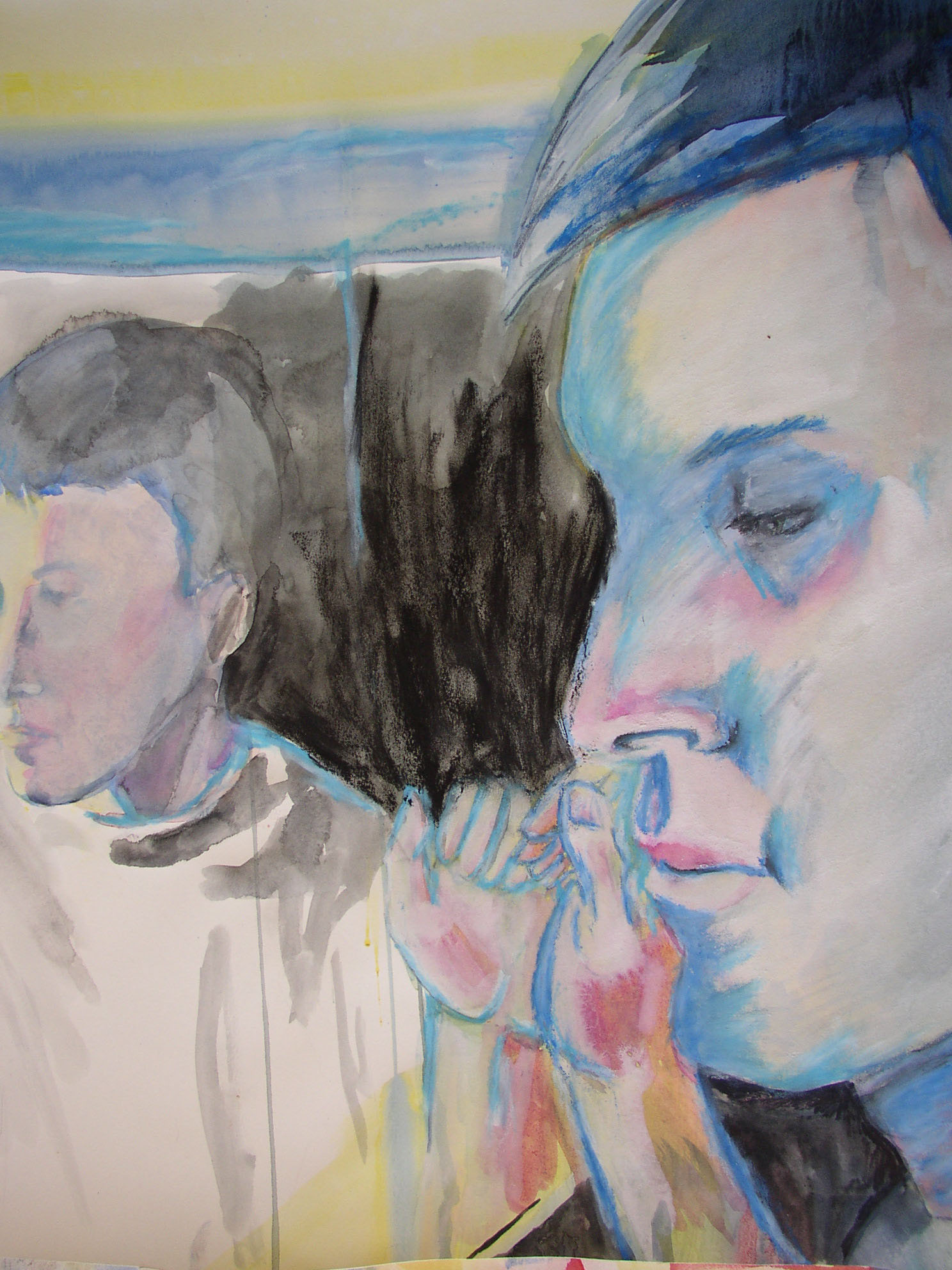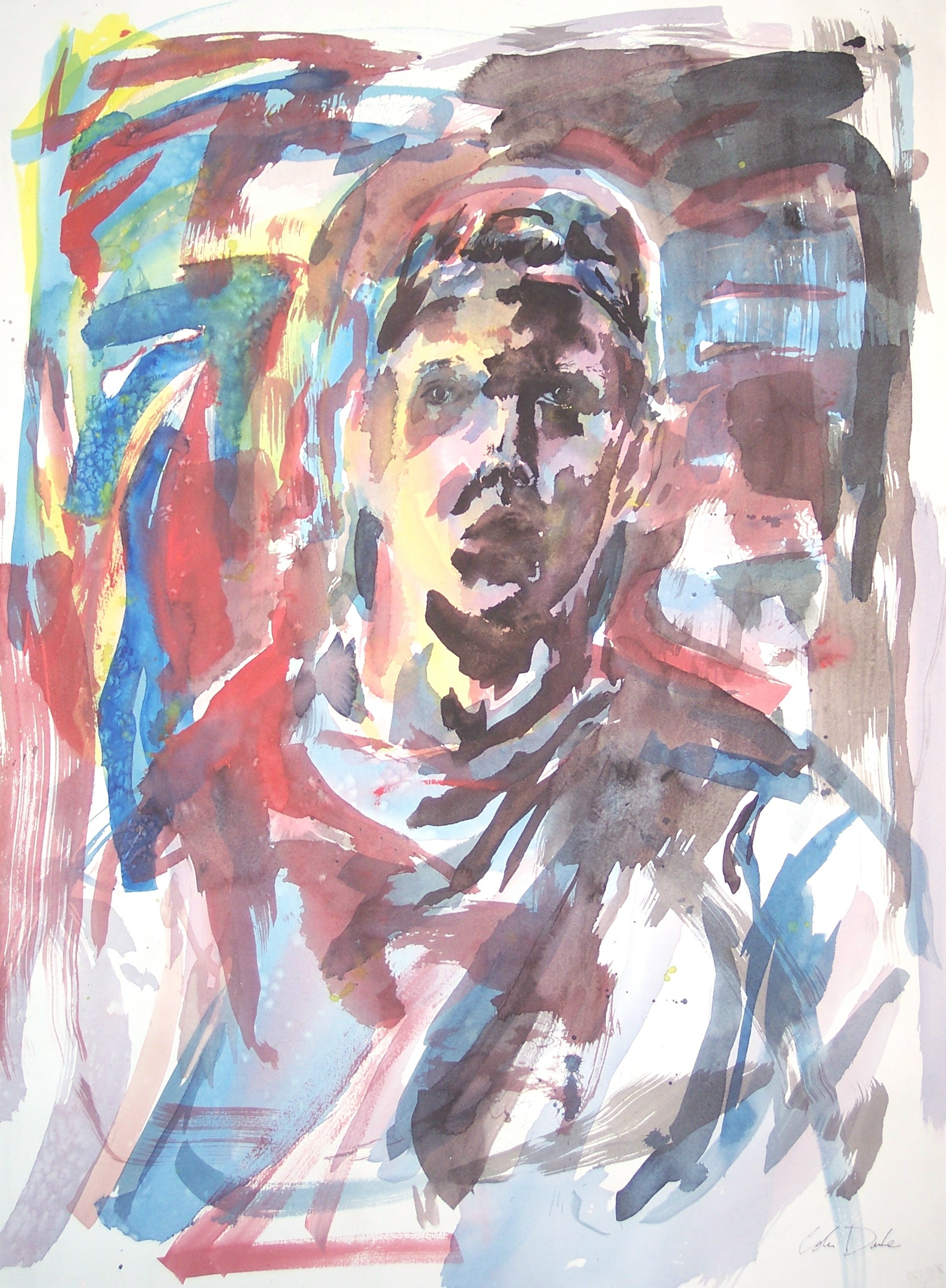Sorry for that language.
I love artists. I've been an artist my entire life. And I love myself. Most artists love themselves.
Three out of hundreds and hundreds of my self portraits.
The New York Times knows that artists can save the world. Artists can lift the spirit so that everyone feels better, so everyone hugs one another, so every place is filled with rainbows (not real rainbows, maybe graffiti rainbows or rainbows made out of discarded car parts). True story: a carjacker jumped into the back of my car, put a gun to my head, and told me to drive. I said, "Miss, please don't hurt me. I am an artist. You can take a photograph I took of the abandoned rail road station that is in my portfolio that takes up the whole backseat next to you. No questions asked." She shuffled through my portfolio, and then she said abruptly, "stop the car." She jumped out and ran. She was no doubt running home to show her significant other my beautiful photograph. This, no doubt, was the first step that would change her from a carjacker to a social worker.
For every doctor, police officer, fire fighter, social worker, priest, nun, or public defender, I can make you a painting of a doctor, police officer, fire fighter, social worker, priest, nun, or public defender. In return, most of them cannot even draw a straight line with a ruler (this is likely the fault of an education focused on math and science rather than art). Most of these people would also likely see a painting at a gallery and merely say, "I like that." Really! Really! You "like" that . . . how juvenile and misinformed and narcissistic! Can you really talk about art without saying "didactic" or Duchamp or contrived or outsider or derivative? But it's not their fault. Rather, it is society's fault for not forcing people to understand and support the arts.
We need rules! We need legislation that requires every household with a non-artist to at least board an artist. We need to increase taxes on everything to pay for art school education. We need to allow artists to pay for everything with doodles and sketches instead of money (didn't Picasso do that?).
The above sarcasm was my initial reaction to headlines about a new report that artists have a huge economic impact on Michigan. It is more of a reaction to how certain artists chose to interpret the initial data. No offense to "artists" or artists, I just do not think that individual artists have a direct impact on the overall economic makeup of a city. They may have an indirect impact through strengthening the culture of an area and making it more livable. And they have the direct impact of making life better by inspiring us and creating awe inspiring images, performances, etc. - that is why I am involved with TheDetroiter.com. The arts and artists inspire me. I like to be inspired. So I try to support other artists as much as I can - very selfish.
But back to that new report, I needed more facts. ArtServe Michigan released a new report, Creative State Michigan, to show that nonprofit arts and cultural organization have a huge economic impact (in a good way) to the State of Michigan. The Huffington Post has already covered the initial release, but I wanted to flesh out some of the facts and the overall takeaway. So I reached out to Jennifer Goulet, President and CEO of ArtServe Michigan, for some answers -- and I posted them below. If you are a cynic (like me), I think you will still have trouble arguing with Ms. Goulet (like I did). This is an important survey, and the state (and all states) should give it a lot of weight. To see it for yourself, go here: www.CreativeStateMI.org.
What are the take-aways from this survey?
- 211 nonprofit arts and cultural organizations contributed nearly half a billion dollars in expenditures alone to the economy of Michigan in 2009.
- Of the462 million in annual expenditures by these 211 nonprofit arts and cultural organizations in 2009,152 million was paid out in salaries for 15,560 jobs.
- There is a significant impact of state dollars invested in the arts and culture nonprofit sector: For every1 invested by the state, these arts and culture nonprofit sector contributed51 into the Michigan economy.
- From 2006 to 2010, the number of arts-related jobs increased by 4 percent in Michigan, while arts-related businesses increased by 43 percent.
- Arts education conducted by Michigan nonprofits aligns with school programs to promote creative problem solving and build skills in design, arts and crafts. In 2009, the 211 organizations hosted 1,841,368 schoolchildren in their facilities and offered 797 programs in schools.
Does the survey show that the state should invest in more nonprofit art organizations that focus on the arts community?
Absolutely! The survey demonstrates the arts and culture nonprofits impact on Michigan's economy and its reach in serving audiences in communities of all sizes across the state. In Michigan's economic recovery and restructuring, there are important roles and opportunities for collaboration for nonprofits, businesses and government. The state must invest in all essential infrastructures -- from transportation to education to health care to the arts -- needed to strengthen and sustain healthy and vibrant communities that attract the talent, business investment and economic activity for Michigan's reinvention. The creative sector has always had great stories to share about how arts and cultural experiences transform us individually or as a society. But, with the growing set of data coming from the Michigan Cultural Data Project, we also can demonstrate our significance in economic impact or audience reach information. We can make a stronger case for rebuilding investment in the arts and cultural sector as part of state economic development strategies.
Arts and culture nonprofits have long known that inspiring works of art and innovative designs have the power to transform people's lives and to create vibrant communities. Its leaders have also known that, as businesses, they directly contribute to the economy as they purchase materials and services in their communities and pay workers who in turn buy goods and services. But until recently, they have not been able to "back-up" their stories with hard facts that demonstrate their combined impact. Now, with data collected through the Michigan Cultural Data Project and other new sources, the sector can fully illustrate its impact in Michigan with annual standardized, reliable information.
Should the state invest more in artists?
Yes. On a simple level, artists are an essential asset providing the foundation enabling and enriching the work of Michigan's nonprofit arts and cultural organizations. Artists and the professionals comprising the creative industries are a widely diverse population -- from the visual artist exhibiting in a local gallery to the dancer or musician teaching classes at a local school or performing at a downtown theater to the writer lending time and talent with youth in an afterschool program to the graphic designer lending creativity to branding campaigns to the emerging talent with a great idea and desire to be an entrepreneur. Across this spectrum, there is a tremendous opportunity for Michigan's artistic sector to be engaged in efforts to build sustainable communities, stimulate local and state economies and be innovative and creative problem-solvers and community connectors. There's valuable opportunity to invest in artists as entrepreneurs that are contributing individually and collectively to Michigan's reinvention aims. And in embracing opportunities where others might just see risks like setting up a studio or gallery in vacant, underutilized urban spaces or opening temporary pop-up retail in areas lacking customers. Both bring attention, audiences, activity and the promise of change to areas facing urban decline.
By investing in artists, wealth is created from ideas -- Detroit is rich with young and old who have great ideas and the creative spirit to bring them to fruition.
How do these art organizations bring money to the overall economy apart from hiring individuals within the specific organization?
In FY 2009, this group of organizations spent nearly half a billion dollars to support creative programs and operations. While $152 million supported jobs in local communities, more than $300 million was invested to support program and operational costs -- such as maintenance of buildings, purchasing materials like office supplies or computers, contracting for services like graphic design or accounting or fees to contract musicians for concert performances, as well as overhead costs such as space rental, utilities and even taxes. These costs range widely -- from reupholstering seats in an auditorium to buying office supplies to licensing software to manage ticket sales or ordering clay for students to learn pottery.
Do these organizations add to the overall cultural and "livability" to areas, so a company may list a vibrant art community as a factor to moving to one area over another?
Without a doubt, arts and cultural organizations contribute richly to the vibrancy and livability of Michigan's communities, making them places where talent want to land and where businesses want to invest and bring their employees. Arts and cultural programs and events are destinations in our communities that significantly add to the quality of life. Their presence signals a community environment where innovations, creative expression, learning and shared experience are important -- important to talent and businesses alike. And, as demonstrated by this report, the arts are an economic driver contributing jobs and spending across our state.
With Michigan Cultural Data Project data, we know that in 2009 the 211 organizations hosted more than 12 million visitors and that 52% of those visits were free -- important measures of accessibility for people of all ages and at a time when the economy forced many to make difficult decisions on how to allocate resources. Another measure of livability and vitality is the number of members, subscribers and board directors supporting these institutions and events -- 331,416. Community members are strong supporters of our nonprofit organizations whether serving on a board or committee, attending events or sharing skills as a volunteer. These figures collectively are snapshots in time, as it represents about 10% of all of the arts and culture organizations in Michigan in one year. With more than 600 organizations registered now in the Michigan Cultural Data Project, and as more organizations enter their data into the system, the measure of the creative impact will only grow.



